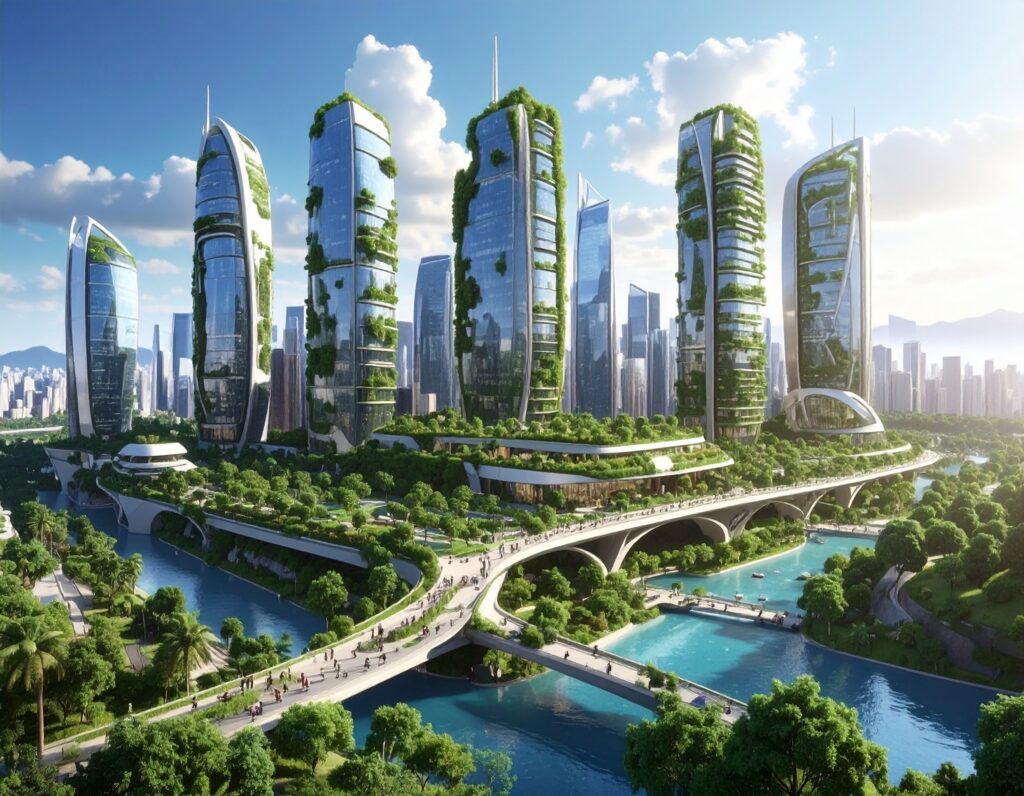
When a city grows, it’s not just more people and buildings. It’s traffic, jobs, rents, parks, water, and the invisible rules tying them together. Marquez et al. explain how social simulation allows us to “test-drive” city decisions on a computer, rather than in real life, where mistakes are costly. They combine three tools that fit like puzzle pieces: dynamic systems to visualize big-picture trends over time, multi-agent systems to observe how many independent “actors” (such as households, firms, or agencies) interact, and cellular automata to map those changes on a grid that resembles an actual city. Put simply, it’s top-down, bottom-up, and on-the-map thinking working together, allowing us to explore what might happen before it actually occurs (Marquez et al., 2010).
Sustainability sits at the center of this approach. The authors describe it as aiming for a good life today without wrecking tomorrow, balancing social needs, the economy, and the environment. In cities, this means tracking how population growth and migration can boost innovation and services, but also bring congestion, unemployment, or pollution if planning is done poorly. Markets set many prices and wages, yet they don’t always account for “externalities,” like dirty air or clogged roads. That’s why planners use cost–benefit thinking that values public health and well-being, not just bills and fees. An easy example is water and sanitation: the benefits include fewer illnesses and more productive days, which matter even if a simple price tag doesn’t capture them all (Marquez et al., 2010).
To illustrate this, Marquez et al. examine Ciudad Juárez. It’s a fast-growing, desert-climate city where water demand rises with population and industry. Most drinking water comes from the Bolsón del Hueco aquifer, and extraction has exceeded natural recharge several times. Residential users account for the largest share of water, with commercial, industrial, and public uses making up the remainder. The authors simulate these pressures with NetLogo and find a worrying pattern: if current trends continue, the aquifer’s supply won’t meet the city’s needs within about two decades. Growth also ties the city to larger economic cycles because it serves as a border hub, which can amplify booms and downturns (Marquez et al., 2010).
Why should young people care? Because everyday choices connect to these systems. Taking a job across town can significantly impact travel patterns. Choosing where to live changes the demand for services. Supporting smarter water use and fair public investments helps your neighborhood stay healthy and affordable. The big message is hopeful: complex doesn’t mean helpless. By simulating cities as living systems—encompassing people, money, and nature together—we can test ideas, identify side effects, and strive for a city that functions effectively in real life, not just on paper (Marquez et al., 2010).
Privacy Notice & Disclaimer:
This blog provides simplified educational science content, created with the assistance of both humans and AI. It may omit technical details, is provided “as is,” and does not collect personal data beyond basic anonymous analytics. For full details, please see our Privacy Notice and Disclaimer. Read About This Blog & Attribution Note for AI-Generated Content to know more about this blog project.